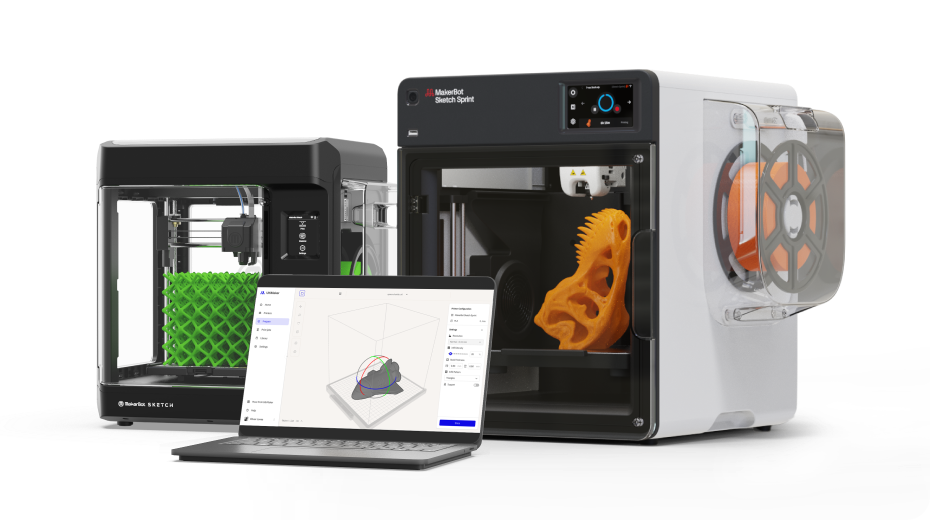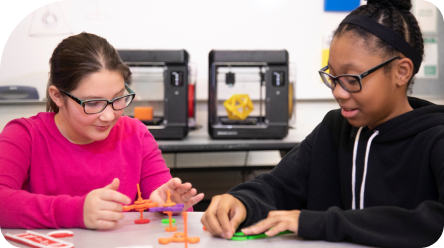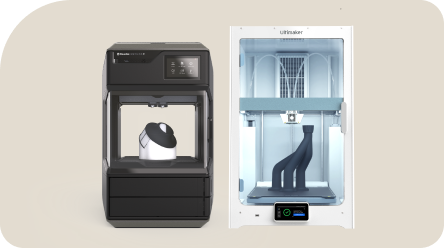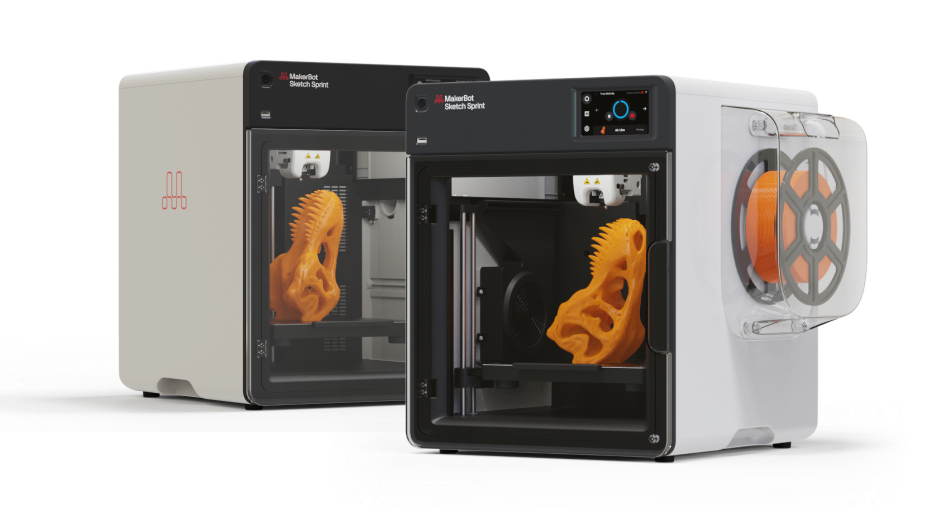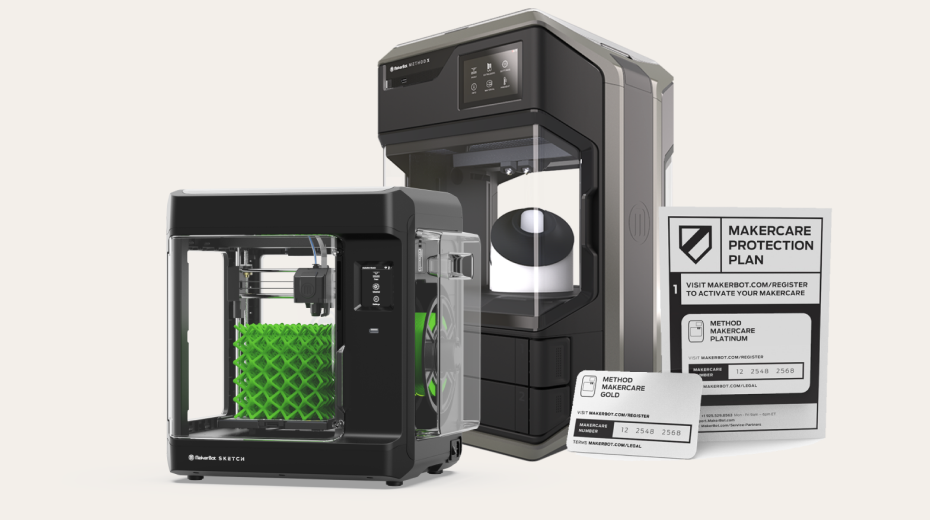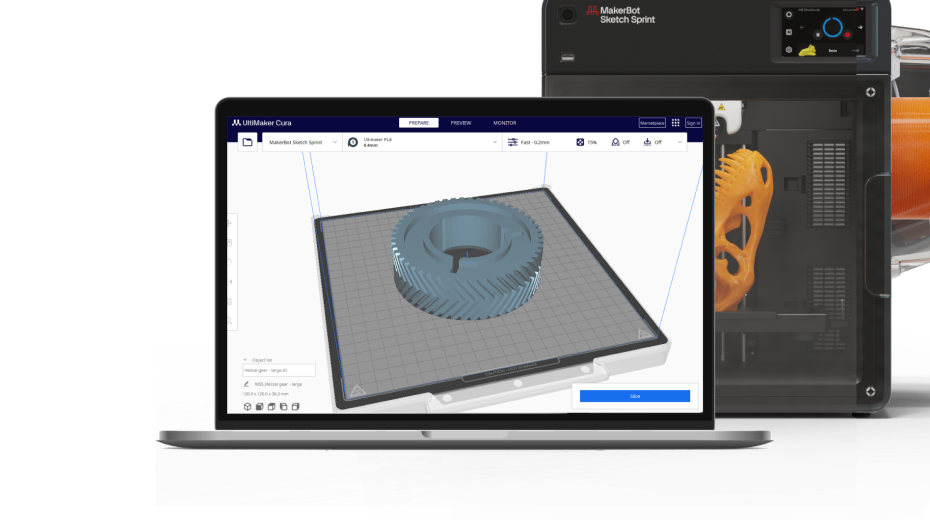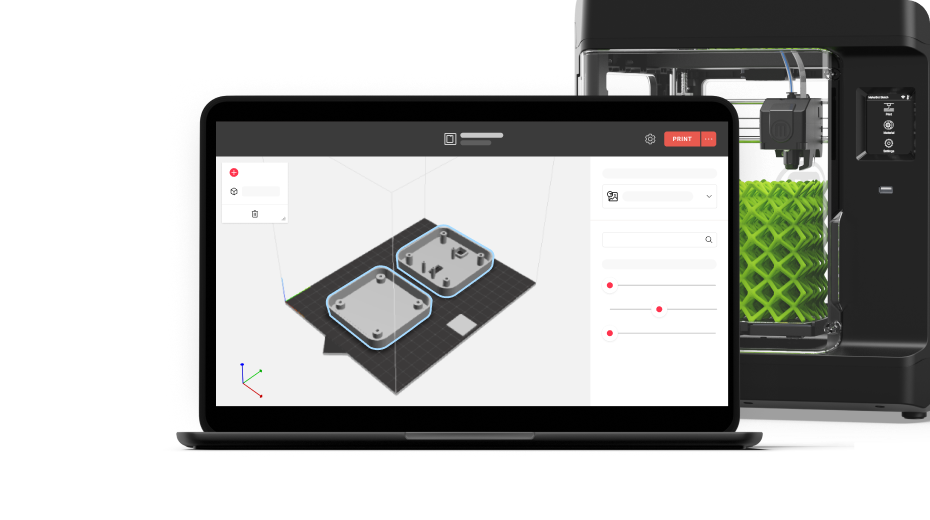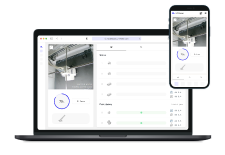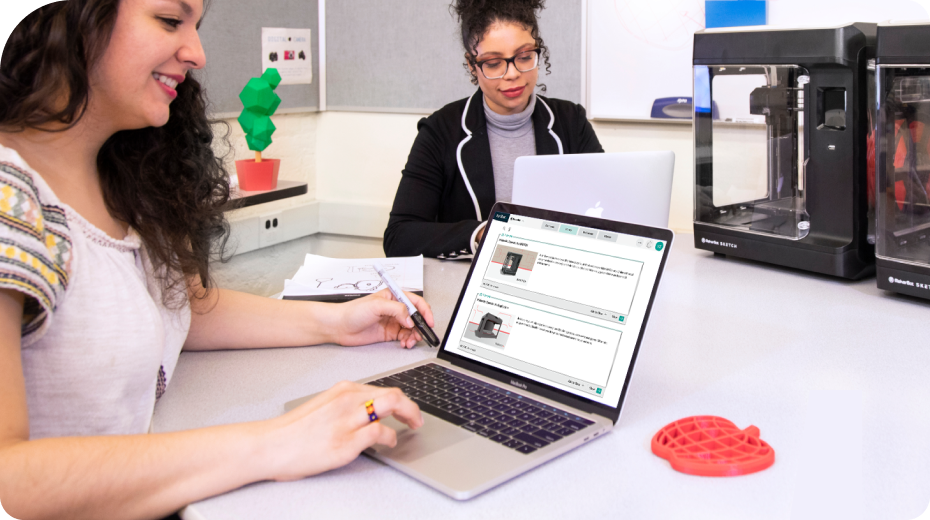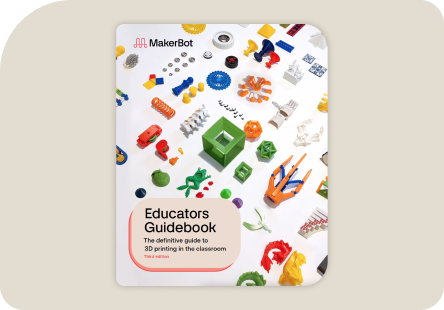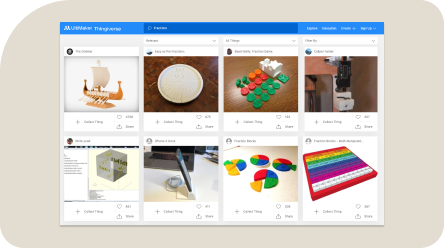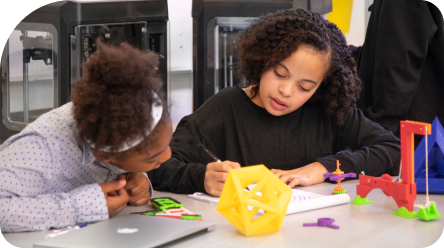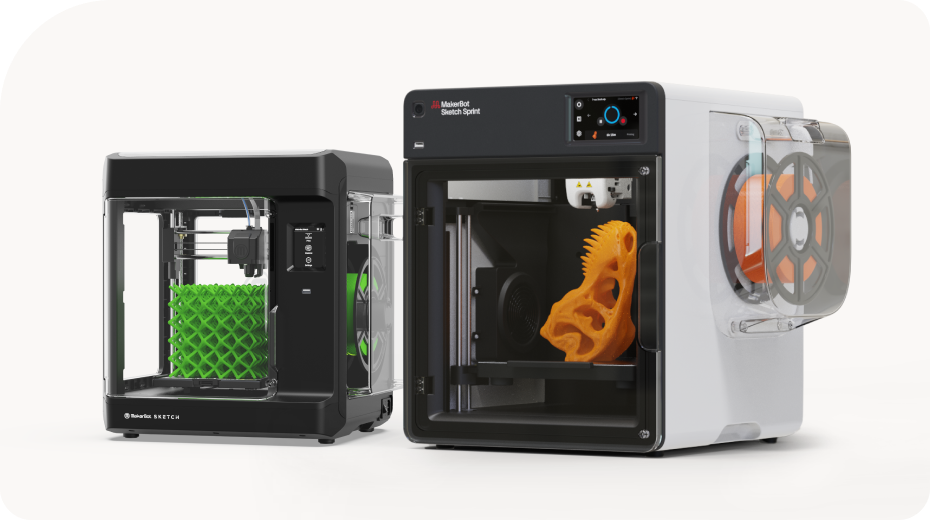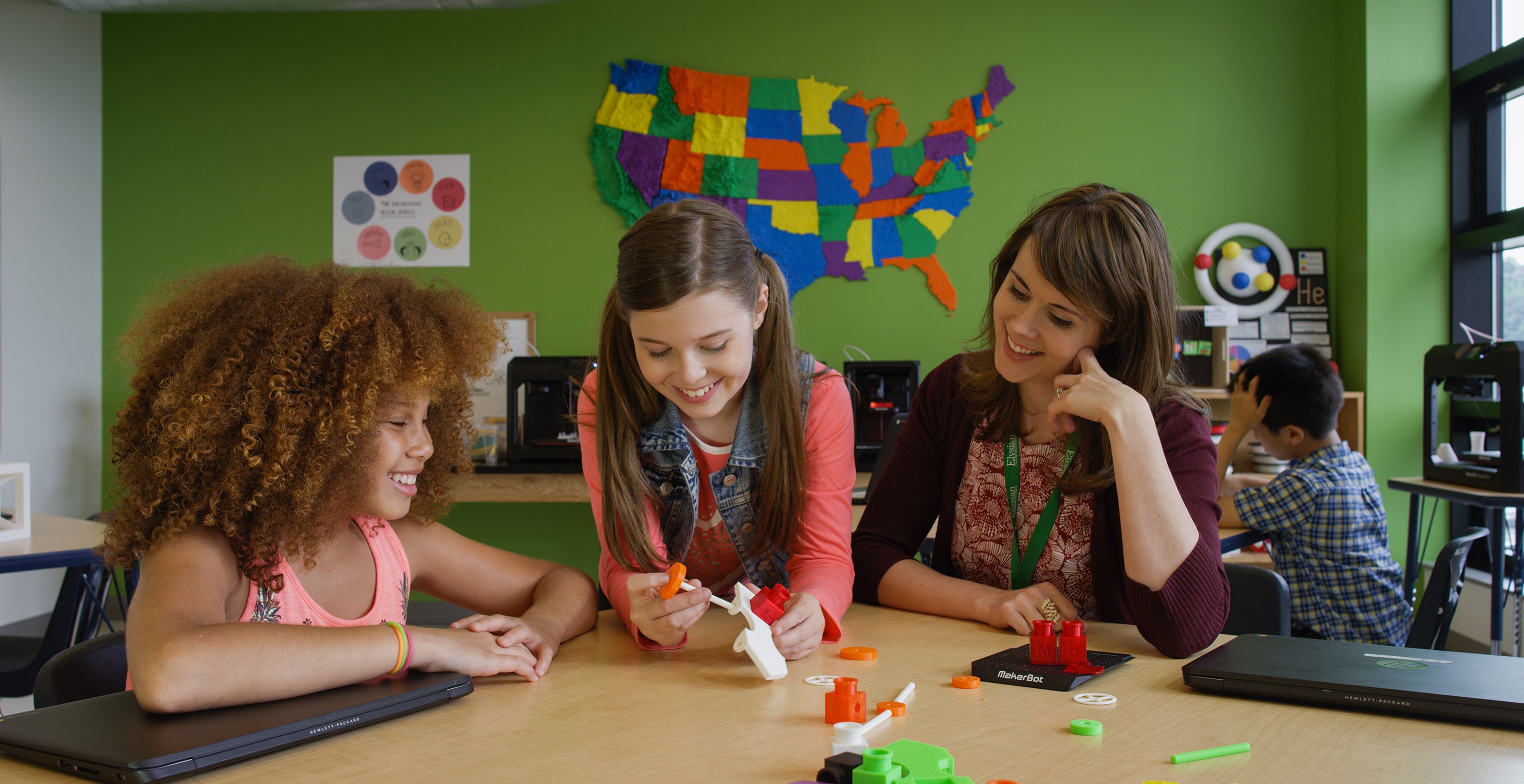How 3D Printing Works
3D printing works by starting with a digital model in a 3D CAD (Computer Aided Design) file and then creating a physical three-dimensional object. An object is scanned – or an existing scan of an object is used, which is processed by a piece of software known as a “slicer.” The slicer converts the model into a series of thin, 2-dimensional layers and produces a file with instructions (G-code) tailored to the specific type of 3D printer.
The type of 3D printer most often found in classrooms is called an FDM (Fused Deposition Modeling) machine, such as the MakerBot Replicator +.
The 3D printer applies the required combination of raw material (plastic, metal, rubber, and the like) and then builds the object by adding one layer at a time, 2D layer by 2D layer, until it is completely designed and finished according to the design criteria from the original CAD file.
For 3D printing’s use in education, it’s a matter of bringing objects out of the computer screen and into the real, physical world – and the into the hands of students for inspection, analysis, and other processes that benefit from physical manipulation.
Here are just a few examples of how schools and students can use a 3D printer in the classroom:
- – History students can print out historical artifacts to examine
- – Graphic Design students can print out 3D versions of their artwork
- – Geography students can print out topography, demographic, or population maps
- – Chemistry students can print out 3D models of molecules
- – Biology students can print out cells, viruses, organs, and other biological artifacts
- – Math students can print out 3D models of problems to solve
These are some of the ways 3D printing technology is bridging the gap between the physical and the digital worlds – find what you need on the screen, then print it into existence.
KInd of mind-boggling, isn’t it?
With the cost of 3D printers becoming more and more affordable, they are no longer just another technological gadget for students to play with but are now an important and useful educational tool. They make both teaching and learning better.
3D printing is one tool that helps students conceptualize and visualize their designs as they develop their work from the development stages of a sketch to the final product.
The 5 Major Benefits of 3D Printing in Education
From the perspective of growth and development, future designers, engineers, and artists all will have been students who have been impacted by 3D printing.
Consider these 5 major benefits of 3D printing’s impact on education…
- Creates Excitement – 3D printing offers students the ability to experience their projects from the model stage to actual creation of the model. This creates both excitement and a better understanding of the design process as they gain hands-on experience it from conception to creation. The individual features are seen more clearly as the student builds the project layer by layer. Excitement also stems from the ability to explore details in reality, not just on a screen or in a textbook. 3D printing also brings the world of theory to the physical world where students can see and touch, opening up new possibilities for learning and activities.
- Complements the Curriculum – No matter what curriculum is being used, 3D printing can help students and teachers work better. 3D printing elevates students from being passive consumers of information on a screen with no thought given to productivity. Unlike conventional classrooms where students are easily bored, they become active and engaged participants through the conception, design, and execution of their projects and interacting with the 3D printer and the teacher.
- Gives Access to Knowledge Previously Unavailable – Because most 3D printers are pre-assembled and plug and play, it is a fun cutting-edge technology for students to learn. Students learn that it is perfectly acceptable to fail on the first try and then try again in order to improve. As students begin to understand that failure is part of the process, they become less afraid to attempt and execute new and different ideas in life. This builds students’ confidence and teachers enjoy the results of having self-motivated, self-confident students.
- Opens New Possibilities for Learning – An affordable 3D printer opens up unlimited learning opportunities for students. 3D printing provides students with opportunities to experiment with ideas, expanding and growing their creativity. It is not easy to have young students figure things out without the benefit of visualization. A visual learning environment improves their understanding of the world, being able to touch and see their projects. 3D printers open up new opportunities for presenting information to young students in an economical and efficient manner.
- Promotes problem-solving skills – The 3D printer provides a variety of learning experiences for students. They need to learn how different 3D printers work and how to operate them, and how to troubleshoot and solve problems. This is an art in which many students do not get to engage during the course of their normal studies. By learning how to troubleshoot and solve 3D printer problems, students learn to practice persistence and endurance in overcoming difficulties. This can translate to helping students solve their own problems in life as well.
Feeding students’ creativity skills can help develop a passion for original thinking and creativity that can later be applied in business. 3D printing promotes students achievements and also prepares them for a college education. They develop the confidence that allows them to pursue challenging courses such as those in STEAM fields. As students explore and grow their imaginations, it cultivates innovation where the student creates their own unique 3D projects that can help train others as well as solve problems.
… As you can see, 3D printing makes it possible for every student to dream bigger and better.
